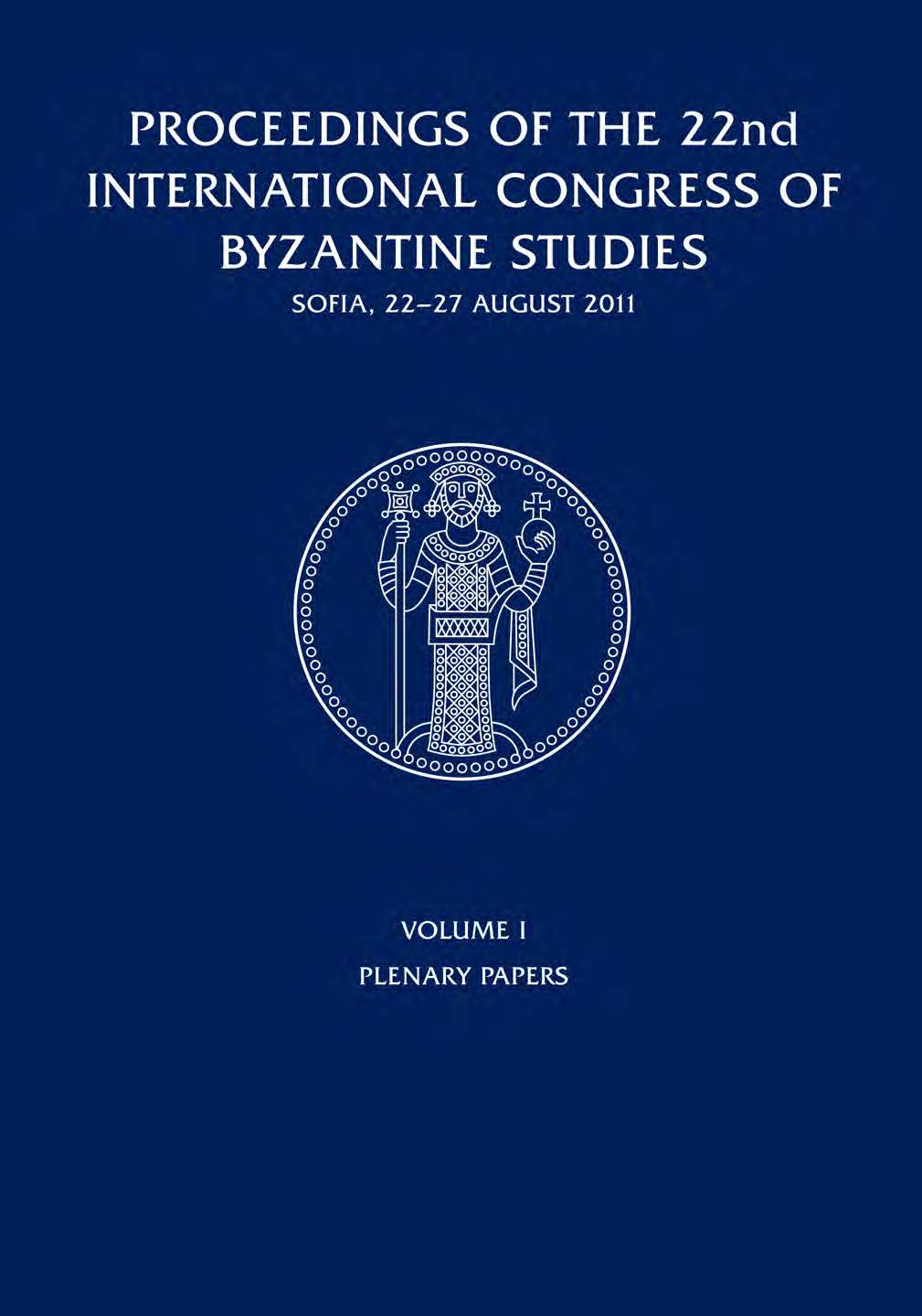
We kindly inform you that, as long as the subject affiliation of our 300.000+ articles is in progress, you might get unsufficient or no results on your third level or second level search. In this case, please broaden your search criteria.











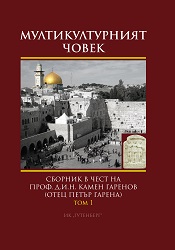
The present preliminary report concerns two churches (Nos 1 and 2) dating from the Middle Ages and located in the Hissarya locality by Dragoinovo village in the region of Purvomai. They are single-naved, single-apse churches with narthexes and entrances from the west. Church № 1 is part of a larger complex including another two Christian churches dated from the second half of the 10-th or the 11-th century, while church № 2 is dated from the 12-th - 13-th century.
More...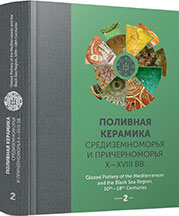
Medieval ceramics from Paterna and Manises were highly prized and very widely traded in the Mediterranean and Atlantic Europe during the Middle Ages. Although a decline in their presence can be observed in the sixteenth and seventeenth centuries due to the boom in Italian majolica, they continued to be distributed, despite the fact that they now represented old-fashioned styles and tastes. The eighteenth century saw the beginnings of a certain commercial recovery, thanks to tiles from the factories in the city of Valencia. The Royal Factory at Alcora (Castellón), in the north of the Valencian region, played an important part in this revival of taste, and its products came to be widely distributed throughout the Spanish-speaking world. This study presents a general overview of the commercial distribution of Valencian ceramics between the sixteenth and eighteenth centuries based on archaeological and historical evidence.
More...
This study consists of initial observations made upon Byzantine, Seljuk, Begliks and Ottoman pottery finds from the Aphrodisias excavations since 2013. Chronology of the pottery finds uncovered in the North Avenue, South Agora, Hadrianic Baths, Theatre and Temple of Aphrodite will be presented briefly. To resolve the contexts in which the potteries belong to, the emphasis is on the history of the city and political events that could have potentially caused considerable changes to the economy. By establishing analogies and considering the chronology of the city, an attempt is made herein to put the pottery finds into their possible contexts.Through the end of the 9th century in Aphrodisias, a sudden rise in the quantity of Byzantine potteries is observed. The city was in commercially connected to Constantinople and centers such as the Adriatic Coasts or Corinth. Pieces of Fine Sgrafitto Ware, Green and Brown Painted Ware and Slip Painted Ware produced from the middle of the 12th century and the beginning of the 13th century have been found in many areas of the city. Very few pottery finds belonging to the Seljuk period have been uncovered. In Aphrodisias, glazed pottery production probably started during the Byzantine or Begliks period.There was a period of growth in Aphrodisias from the first quarter of 15th century to the mid 16th century. In excavated areas, a large number of pottery finds have been found. With the change of commercial routes in the 17th century, the city was increasingly reduced into a rural settlement and has subsisted to the present day.
More...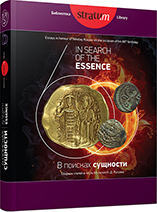
The article deals with the most popular among the warriors offensive melee facilities weapons, especially swords, medieval sabres, falchions and their components found in the northern part of the Dniester-Prut interfluvial area.The territory of the Northern Bukovina knows 11 swords. The above analysis of blade weapons made it possible to distinguish among them some types of XIIa, XVIа, XVII, and XX according to E. Okshott, dating to 14th—16th centuries. The proposed typology is not exhaustive and definitive, and perhaps further research and new finds will be able to clarify it more.The fragments of the sabre, as well as the saber guards, were found on the studied area. The latter refers to types I, II according to A. Kirpichnikov. The guards are dated by the analogies of the 11th—13th centuries. Among the weapons found in the investigated territory, there are also known two falchions, of cross-guard shape and pommel shape. The falchions are type 1 and 2 according to A. Nadolsky. They are dated by the middle of the 15th — the beginning of the 16th centuries.Thus, it is obvious that the local population from the investigated territory was quite sufficiently armed. Evolution of these weapons was mainstreamed with the general development of the military art in Europe. The territory of the Northern Bukovina in the 12th—16th century was involved into the pan-European political events. And the finds of the advanced weapons of that time serves as evidences to the fact.
More...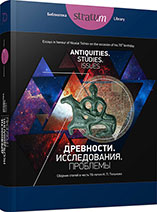
The article is devoted to revealing regularities of formation of the Russian-nomadic frontier in the Middle Don region based on the analysis of the geographical location of the archaeological sites of the 9th—17th cc. The sites of Slavic Borshevskaya culture (the end of the I Millennium AD) are located in the lower reaches of the Voronezh river and on the right Bank of the Middle Don (Central Russian upland). The sites of the Saltov culture are located on the right bank of the Middle Don, to the North of the Tikhaya Sosna river. The left bank of the Middle Don (the Oka-Don plain, Kalacska hill) was not an area of active colonization by the bearers of the Borshevskaya and Saltov cultures.In 12th — first half 13th centurie, the Russian population is documented in the lower reaches of the Voronezh river, Semiluki area reaches of the Don. Polovtsian nomads used to camp on the right bank of the Middle Don and do not spread beyond the South of the Tikhaya Sosna river and on the left bank of the Middle Don to the Bityug river.In the Golden Horde period, the Russian population colonized the left bank of the Middle Don. There is archaeological evidence of the coexistence of different ethnic groups. Nomadic sites do not extend to the North of the Tikhaya Sosna river, on the right bank of the Don river, and the mouth of the Voronezh river, on the left bank.Belgorod defensive line reproduces the line formed by the fortified settlements of Slavic Borshevskaya cultures on the rivers Don and Voronezh, and fortified settlements of the Saltov-Mayaki culture on the Tikhaya Sosna river. The left bank of the Middle Don in the 17th century, just like in the time before that, was still the region of the original colonization by the Russian population.
More...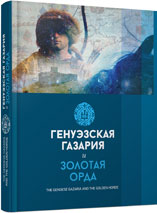
The author publishes some new recently obtained and analyzed data related to historical topography of a Golden Horde city of Ukek. He specifically examines history of field research on the Uvek Hillfort, which dates back to 90s of 19 th c. His special focus in examining natural and geographic factors is on peculiar local topography affected by some landslides, as well as on a high hill with a flat top (the Uvek Mount), which gave the name to the city — Ukek, from a Mongolian word meaning ‘plateau’. Changes in landscape caused by either natural or anthropogenic factors are also assessed. New data on fortifications and hydraulic structures of the hillfort, a rich estate, a hammam, kilns and a mausoleum are also published and discussed in the article.
More...
The author provides general characteristics for over a hundred of archaeological sites of the Golden Horde time on the territory of the Volga Bulgaria, such as forts, unfortified settlements and necropolises. He studies history of their research, area of distribution, topography of some sites, stratigraphy and chronology, archaeological material, and historical context of their emergence and development.Archaeological research of 19th—20th cc. detected at least 330 settlements — both fortified and unfortified. Best studied are forts, i. e. remains of towns and fortresses. Yet, only a small part of archaeological forts can be identified as historical towns mentioned in written sources. Thus, the article first studies towns known from written sources (with Bilyar and Bulgar as the largest ones), then the forts that emerged in pre-Mongol period and continued to exist over the Golden Horde time, and then the forts emerged during the Golden Horde time and unfortified settlements, and last — necropolises of late nomads on the territory of Bulgar Ulus. Necropolises left by the settled population are considered in parallel with the respective settlements.
More...
The article represents a study of the topography of the Golden Horde town of Azak, which has remained quite underresearched until present. In the 18th — first half of 20th centuries, the hillfort did not attract attention of the Russian historians and archaeologists. Nowadays the territory of the Medieval Azak is completely built-up and archaeological investigations of 20th — early 21th century have been conducted on separate sectors, mainly in the new construction zones. According to the results of research, one can determine the borders of the Medieval town at different stages of its existence. The author discusses different aspects of the economic development of Azak as well as peculiarities of urban development. He localizes various social, professional and ethnic population groups within the town’s territory, together with common buildings, sources of water supply, town necropolises, fortifications and so on.
More...
This article represents the first full publication of the materials from restoration works (1984—1985) at one of the famous cult Muslim buildings of Medieval Crimea. An inscription above its door way states that the construction was made by Abdul-Asis, son of Ibrahim al-Arbeli, during the reign of khan Uzbek in 714 anno Hegirae (= 1314 AD). The field survey of the monument allowed the author to specify its chronology and architectonics, as well as to get an idea about some of its completely or partly lost architectural and construction details. Three building periods were distinguished: second half of 15th century, 1512—1513 and late 19th — early 20th century. The research has shown, that the mosque, despite of some Ottoman elements, was still influenced by Seljuk building traditions, involving reuse of some architectural and construction details from some earlier Golden Horde buildings, including the previous mosque of Uzbek from 1314, whose location is still unknown. The architectonics of the building clearly illustrates the beginning of a new stage in Muslim cult construction of Medieval Crimea and makes the so called Uzbek mosque a unique building of the transitional period between two architectural styles.
More...